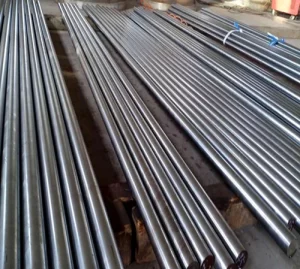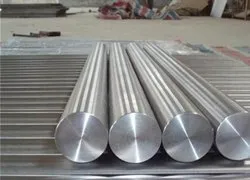Introduction
Stainless steel is a versatile and essential material that finds its way into various industries and applications due to its remarkable properties. Among the various stainless steel grades available, 410 stainless steel stands out for its unique combination of attributes that make it suitable for a wide range of uses. In this comprehensive guide, we will delve into the key properties of 410 stainless steel, exploring its composition, mechanical characteristics, corrosion resistance, heat treatment, and common applications.
Chemical Composition of 410 Stainless Steel
 410 stainless steel is a martensitic stainless steel grade known for its moderate corrosion resistance and exceptional mechanical properties. Its chemical composition typically includes:
410 stainless steel is a martensitic stainless steel grade known for its moderate corrosion resistance and exceptional mechanical properties. Its chemical composition typically includes:
- Carbon (C): 0.08% – 0.15%
- Chromium (Cr): 11.5% – 13.5%
- Manganese (Mn): 1.0% max
- Silicon (Si): 1.0% max
- Phosphorus (P): 0.04% max
- Sulfur (S): 0.03% max
The high chromium content contributes to the corrosion resistance of 410 stainless steel, while the carbon content facilitates its hardening capabilities.
Mechanical Properties
410 stainless steel boasts remarkable mechanical properties that make it suitable for various industrial applications. Its strengths include:
- Tensile Strength: With a typical tensile strength of 450 MPa (65,000 psi), 410 stainless steel exhibits excellent resistance to mechanical stress.
- Hardness: This grade can achieve a maximum Rockwell hardness of approximately 48, making it well-suited for applications requiring high hardness.
- Yield Strength: The yield strength of 410 stainless steel is around 290 MPa (42,000 psi), providing structural integrity in demanding environments.
- Ductility: While not as ductile as austenitic stainless steels, 410 stainless steel still maintains a reasonable level of ductility for its martensitic nature.
Corrosion Resistance
410 stainless steel demonstrates moderate corrosion resistance compared to other stainless steel grades. Its corrosion resistance is primarily due to its chromium content, which forms a passive oxide layer on the surface, protecting it from corrosive environments. However, it may not be suitable for highly corrosive environments like marine applications.
Heat Treatment
Heat treatment plays a crucial role in enhancing the properties of 410 stainless steel. The material can be hardened through heat treatment processes such as quenching and tempering. Quenching involves rapidly cooling the steel to achieve high hardness, while tempering reduces brittleness and improves toughness without sacrificing too much hardness.
Applications of 410 Stainless Steel
 410 stainless steel finds applications in a wide range of industries:
410 stainless steel finds applications in a wide range of industries:
- Cutlery and Kitchen Appliances: The high hardness and corrosion resistance of 410 stainless steel make it a popular choice for knives, forks, and kitchen tools.
- Aerospace Industry: Components requiring high strength and resistance to wear, such as aircraft parts, benefit from the mechanical properties of 410 stainless steel.
- Automotive Industry: It is used in applications like exhaust systems and fasteners due to its resistance to high temperatures and corrosive gases.
- Medical Instruments: Surgical instruments and medical equipment benefit from the hardness and corrosion resistance of 410 stainless steel.
- Petrochemical Industry: 410 stainless steel is used in valves, pumps, and other equipment in the petrochemical sector due to its resistance to chemicals and high temperatures.
FAQs About 410 Stainless Steel
Q1: Is 410 stainless steel magnetic?
Yes, 410 stainless steel is magnetic due to its martensitic crystalline structure.
Q2: Can 410 stainless steel be welded?
Yes, 410 stainless steel can be welded using standard welding techniques, although preheating and post-weld heat treatment are recommended to avoid cracking.
Q3: What is the temperature range for heat treatment of 410 stainless steel?
The typical heat treatment range for 410 stainless steel is between 900°C and 1050°C (1650°F – 1920°F), followed by tempering at lower temperatures.
Q4: How does 410 stainless steel compare to 304 stainless steel?
410 stainless steel is more suitable for applications requiring high hardness and moderate corrosion resistance, while 304 stainless steel offers better overall corrosion resistance and formability.
Q5: Can 410 stainless steel be used in food processing?
Yes, 410 stainless steel can be used in food processing equipment, but it’s important to ensure proper cleaning and maintenance to prevent potential corrosion issues.
Conclusion
410 stainless steel’s unique combination of mechanical properties, moderate corrosion resistance, and heat treatability make it a valuable material in various industries. Its application versatility, from cutlery to aerospace components, underscores its significance in modern manufacturing. Understanding the key properties of 410 stainless steel empowers engineers and designers to make informed material choices for their projects, balancing strength, hardness, and corrosion resistance to meet specific requirements.
